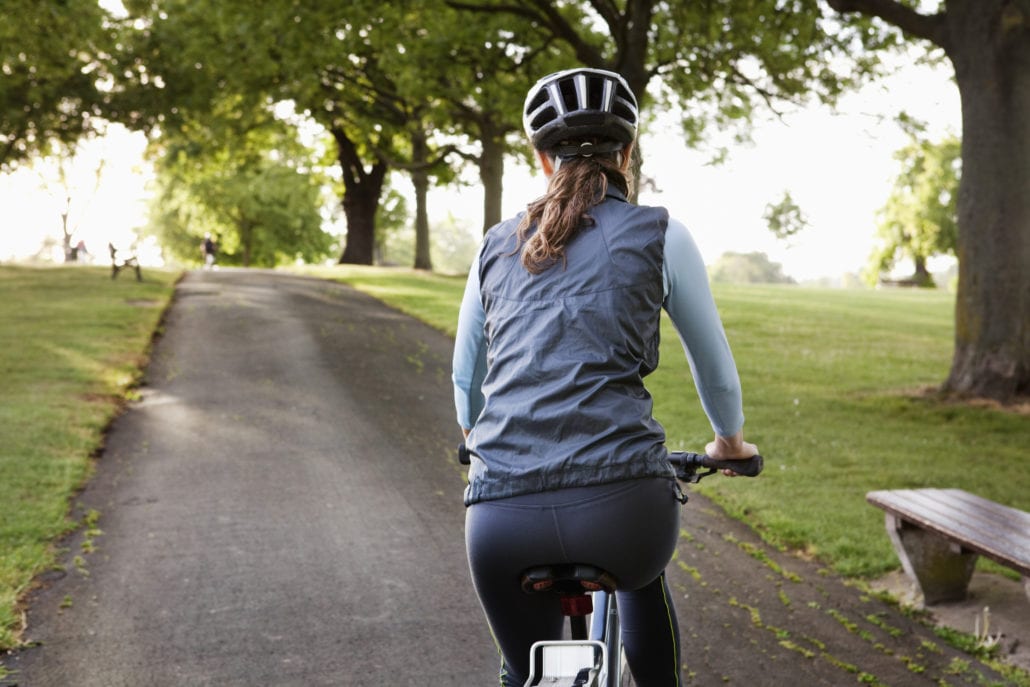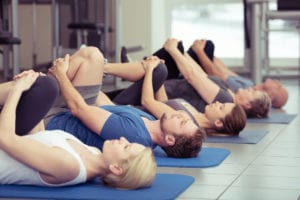When first presented with having a “bag” I was terrified. I had a lot of questions…. How will I wear my clothes? Will I still be able to run or lift weights? Will I ever date again? How can I go to the beach? And so many more. I really was not familiar with this at all.

How UOAA Helps: Connie contacted UOAA before surgery earlier this year and is now on the path to health and happiness in life with an ostomy. Donate to help the next ostomate in need.
I did my fair share of googling, but there are so many conflicting pieces of information out there. I also joined some Facebook groups to find some support. That proved to be very confusing and often quite discouraging. In February of 2023, a week before my surgery, I met with an ostomy nurse for the first time. That is when it hit me. She showed me a practice stoma, put my markings on, and had me look in a mirror with a bag. I realized I needed more information in order to navigate this the best I can.
Finding UOAA
I came home and searched for ostomy support groups in my area and found one. I immediately connected with them, and they shared UOAA’s information with me. I then went on to their website ostomy.org to gain as much knowledge as possible. I went into surgery with a positive attitude because I knew my life would be so much better afterward.
The people I talked to at UOAA’s office were so helpful! They answered all my questions, and I had a lot! They directed me to many resources like a New Patient Guide and sent me links to videos and other information which I still use. It is reassuring to know that I can reach out with questions and that they will be there for support.
UOAA has been a lifesaver for me. I was overwhelmed following my ostomy surgery. I am so excited that I am feeling better. I am so appreciative of the connections I have been able to make and the educational materials I have received by contacting UOAA.
On February 23, 2023, I had surgery for an end ileostomy, total colectomy, rectopexy, and hernia and bladder repair. After a lifetime of being a prisoner to my colon and GI tract, a ton of medications, and a ridiculous daily twelve-hour ritual that dictated my days, I finally was given hope to improve my quality of life. The day after surgery I already knew this was the right thing for me, and I somehow felt “free” of all the meds and issues I had before.
Helpful Free Resources
UOAA sent me a welcome packet in the mail with a ton of info about nutrition, living with an ostomy, exercise materials, you name it. The coolest thing was the card to use with TSA when I fly… that is going to be a lifesaver, I think! I had many questions about getting back to my normal activities, and I was sent links to Youtube and even Instagram of people that have ostomies and have resumed, or even surpassed, their pre-ostomy fitness routines.
My experience has definitely been better with my local ostomy group and with UOAA by my side.
A link to an occupational therapist was also helpful. I started following and connecting with many of these people, as I have found inspiration in them. I have since called UOAA several more times seeking answers to my questions, concerns, or even worries. Each time they have promptly responded and provided me with continued optimism as I begin this ostomy journey.
UOAA Helped Me Feel ‘Normal’ Again
I think that the biggest thing is that UOAA helped me to feel “normal” and that I am not alone in this. Starting out with an ostomy is pretty scary, and there are a lot of unknowns. So much of what you read is negative from people that have had problems or are just very discouraged with their situations. UOAA shares the successes, the positives, and the education so that you can learn and grow each day knowing that you don’t have to give up anything at all.
 For me, I plan to get back to my full fitness routine once I am fully recovered. I already feel healthier than I have for so many years. But I know I still have a lot of learning to do… from appliances (I still can’t figure out the best ones for me), to the different types of foods to eat, to stoma care (I still always want to make sure everything is okay), to traveling, exercise, clothing, wraps, connecting with other people with ostomies, and maybe even dating again in my future. My experience has definitely been better with my local ostomy group and with UOAA by my side.
For me, I plan to get back to my full fitness routine once I am fully recovered. I already feel healthier than I have for so many years. But I know I still have a lot of learning to do… from appliances (I still can’t figure out the best ones for me), to the different types of foods to eat, to stoma care (I still always want to make sure everything is okay), to traveling, exercise, clothing, wraps, connecting with other people with ostomies, and maybe even dating again in my future. My experience has definitely been better with my local ostomy group and with UOAA by my side.
Grateful to Learn More at the National Conference this Summer
I’m also very thankful to have been awarded a CARES scholarship (FYI, current scholarships have been filled) to attend UOAA’s National Conference in Houston. This assistance will allow me to continue on my journey in a healthy and positive way.
As a single 57-year-old mom, I have three grown children (one still in graduate school), a new granddaughter, and two younger children I adopted, one with unique medical needs – it has not been easy. Last year’s hurricane, coupled with the astronomical surgery costs, have me struggling greatly on a teacher’s salary. I have worked really hard to provide for other people, and I’ve never really done for me.
This conference is something I feel is important for me as I want to be able to live my life to the fullest. I strive to be the best Nana, mom, and person I can be. I want to embrace my body, my life with an ostomy, and continually improve my quality of life.. It will allow me to move forward, make connections, gain much-needed knowledge, be an advocate for myself and others, and to stay “OSTOMISTIC!”
One day I can even envision myself advocating for others in the ostomy world, being active in the ostomy community, and I would love to get to the point where I can even be an inspiration to others.
Connie, you are already inspiring to those of us at UOAA.
Please Donate to UOAA to put other people like Connie on a successful path. Support quality of life resources, education and advocacy for people living with an ostomy or continent diversion. United Ostomy Associations of America inc. (UOAA) is a 501(c)(3) nonprofit organization and all donations are tax deductible. Thank you!
Shared by Connie Pollina of Naples, Florida





